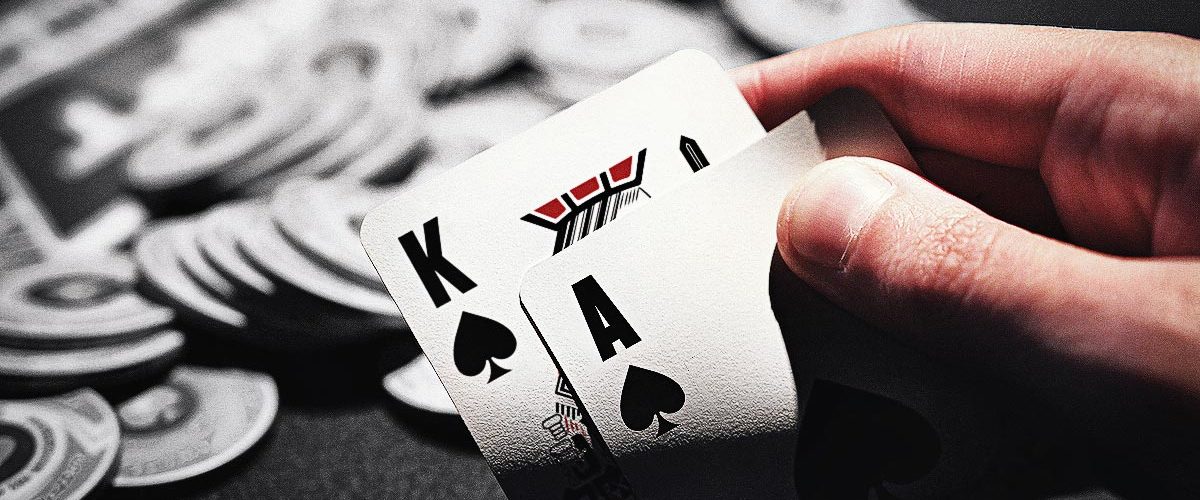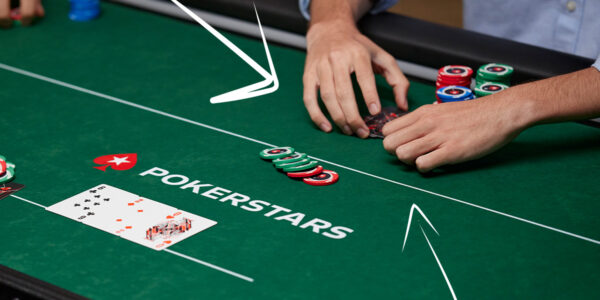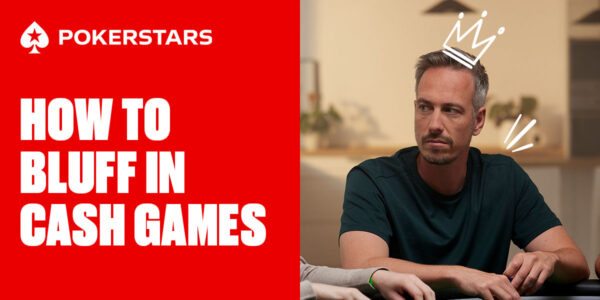Range Wars – Part 2
In Part 1 we defined what range advantage and nut advantage means, as well as what player types it’s appropriate to think in these terms against. In this part we are going to look at a basic example to help illustrate the concepts of range advantage and nut advantage, hopefully helping you start to visualizing these ideas and get your head around the concepts. Then in the next article we’ll look at some more complex but common situations to start developing a feel for what range advantages are and are not.
Example 1
A tight/conservative player opens from UTG. It folds to the big blind and they defend with 87s. The flop is A♠ K♦ 2♣ . Who as the advantage here?
We can assume a tight/conservative player opening UTG has a narrow and value heavy range. It may look something like this:


Note this is about 7% of starting hands. Now let’s give our big blind defender a reasonable range. Note that in the given example we know the big blind’s actual hand is 87s, but from a range vs range perspective we need to consider what the big blind’s entire range looks like on this board. Let’s assume the big blind defends by calling the raise with this range:


Who has the range advantage here? Intuitively you might suspect the UTG raiser had the advantage on an A♠ K♦ 2♣ flop texture, and that’s right. Although the big blind does have hands that miss this flop, like TT, and some hand combos that hit it weakly, like KQs, the big blind caller has a ton of combos that simply miss everything completely and also have no showdown value, like 65s and the like. The actual equities here look like this:


It’s actually worse than that for the big blind. Not only does the UTG raiser have the range advantage here, but the big blind defender is caught giving reverse implied odds with some of his call range… they have more Ax and Kx but those hands are all marginal made hands compared to the UTG’s hands that have hit this board. So when the blind defender holds A6s for example, they are not likely to get much action from UTG when they are ahead, but will be stuck giving some action when behind.
Additionally, the UTG raise has a nut advantage on this board texture as well. The nutted hands on A♠ K♦ 2♣ rainbow are AA/KK/22/AK. Of these strongest hands, the big blind can only hold 22. But the UTG player can hold AA/KK/AK very easily. So of these “nutted” combos, the big blind only has 3 (the three combos of 22), while the UTG player has 15 total combos (3x AA, 3x KK, 9x AK). So the UTG player holds both a distinct range advantage and nut advantage on this board.
So what sort of strategy adjustments might one make as the UTG raiser or the BB defender here as a result?
Let’s start with the UTG raiser. When the flop is checked to them, the can continuation bet at a high frequency, using a smaller sizing, with their entire range. Why? Most of the big blind’s holdings are mediocre or worthless (air). The UTG raiser has a big advantage in strong/nutted hands. The UTG preflop raiser doesn’t have to cbet 100%… they may elect to check behind with showdown value combos like KQ or QQ/JJ that don’t benefit much from betting (they don’t get called by worse hands often and don’t get better hands to fold often), and cbet the rest. Using the above range for UTG, they would be checking the flop with 15 combos (QQ/JJ/KQs 3 of each), and betting their other 54 combos for a c-bet frequency of 78%. Because the opponent’s range misses so much on this flop texture, a small sizing is fine with both value hands and bluffs when betting at a high frequency with a range advantage. The villain has top pair or better only about 24.5% of the time on this board, and most of their top pairs are weaker Ax that doesn’t even know where it’s at. A very tough prospect to play out of position, so the small bet is all that’s needed to put them in a weird and unprofitable spot.
Note, if we suppose the UTG raiser actually applied some balance preflop and included the lighter hands of T9s, 98s, 87s in their opening range as well, these are combos they can include as bluffs in their high cbet frequency/low sizing strategy on this flop texture. There’s just no good way the big blind player can defend well against them while at such a range disadvantage.
As for the big blind defender… it’s such a bad spot for them to be in, between the disadvantage of their range on this board texture to being out of position, they should probably opt for a more conservative line in most cases, often simply ceding the pot. It’s not a spot you want to run a bluff, into an opponent with both a tangible range and nut advantage. What about when they hit their hand though? Marginal Ax are worth at least a check/call, maybe 2, but probably can’t pay off a triple barrel from the UTG player. Kx maybe a single check/call. How about when they hit harder, like A2s for a flopped 2 pair or 22 for bottom set? From a “I’m just playing my own 2 cards” perspective, players like to get aggressive with these hands and try to build pots. But from a range vs. range perspective, that’s probably not ideal as when the big blind player goes crazy post flop they are probably only going to get cooperation in playing a huge pot when the UTG player has AA/KK/AK specifically. Although having a set of 2’s vs. AK specifically is very nice because you stand to win a big pot, over all this is a bad spot:


So the more prudent play, from a range vs range perspective, is to start with a check/call and go from there. If you opt to check the turn you call again, or should the UTG player check behind you, now maybe you can value bet the river looking to get hands like AJ, ATs, KQs to bluff catch you, hands that would have been unlikely to give massive action had you raised and tried to build a big pot.
In the next article we will dig into more common but also less intuitive spots to decipher who holds the range advantage (if anyone), nut advantage (if anyone), and the implications of those factors on the players decision making in game.














